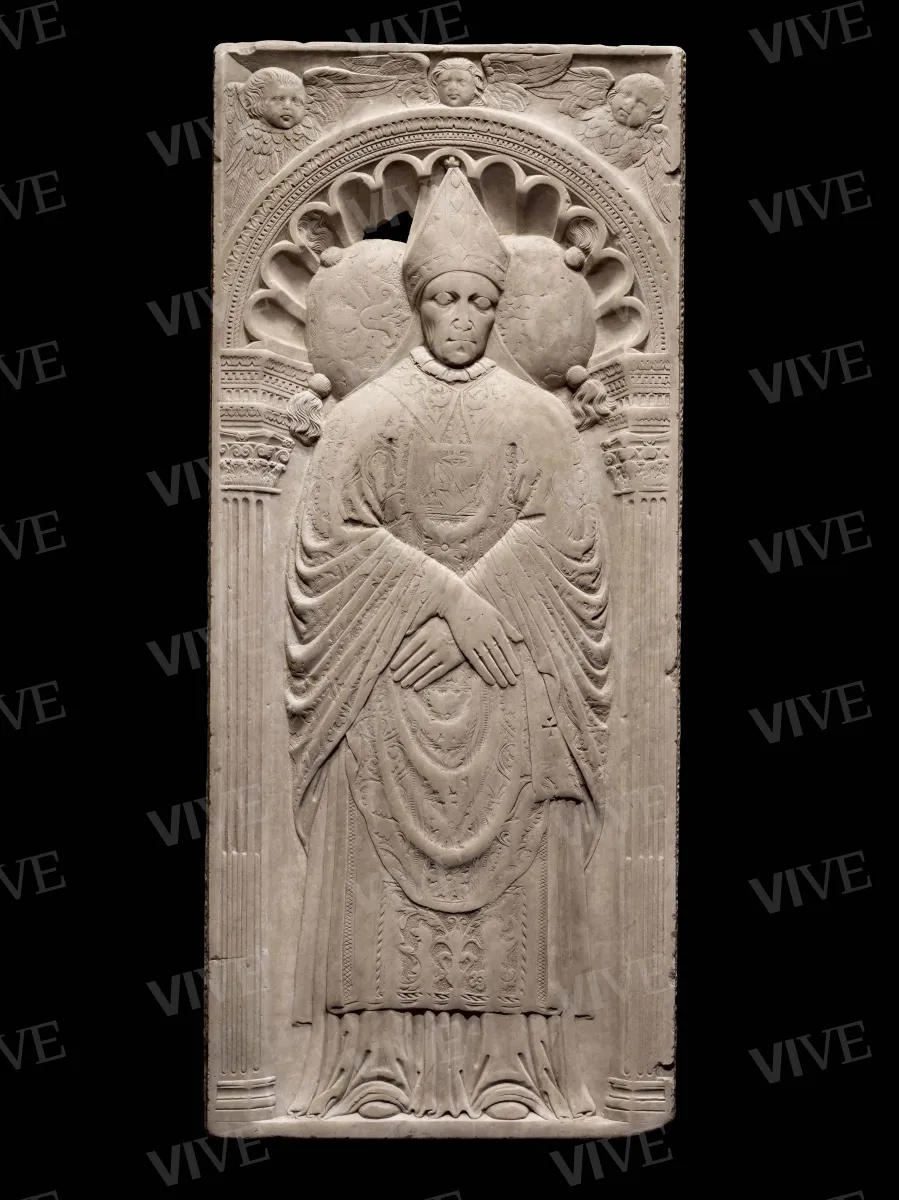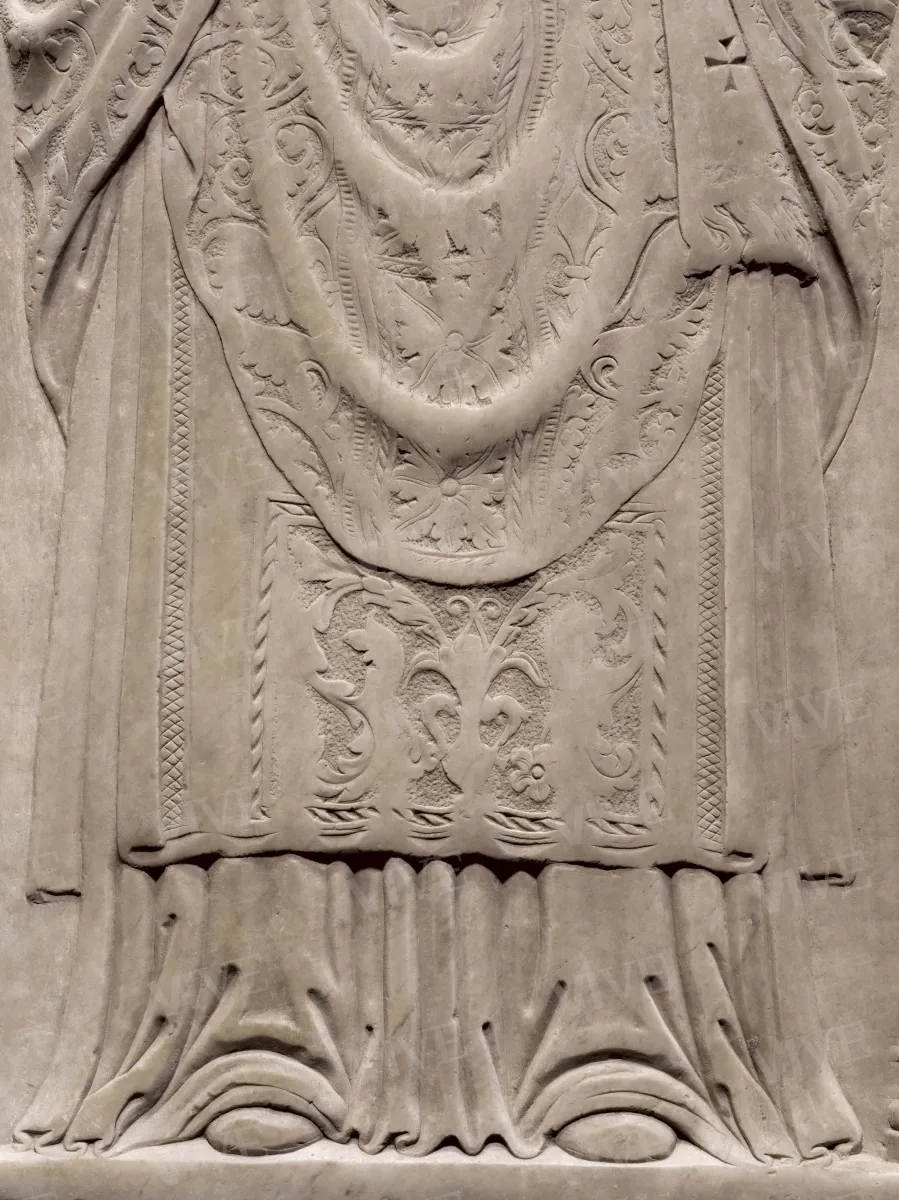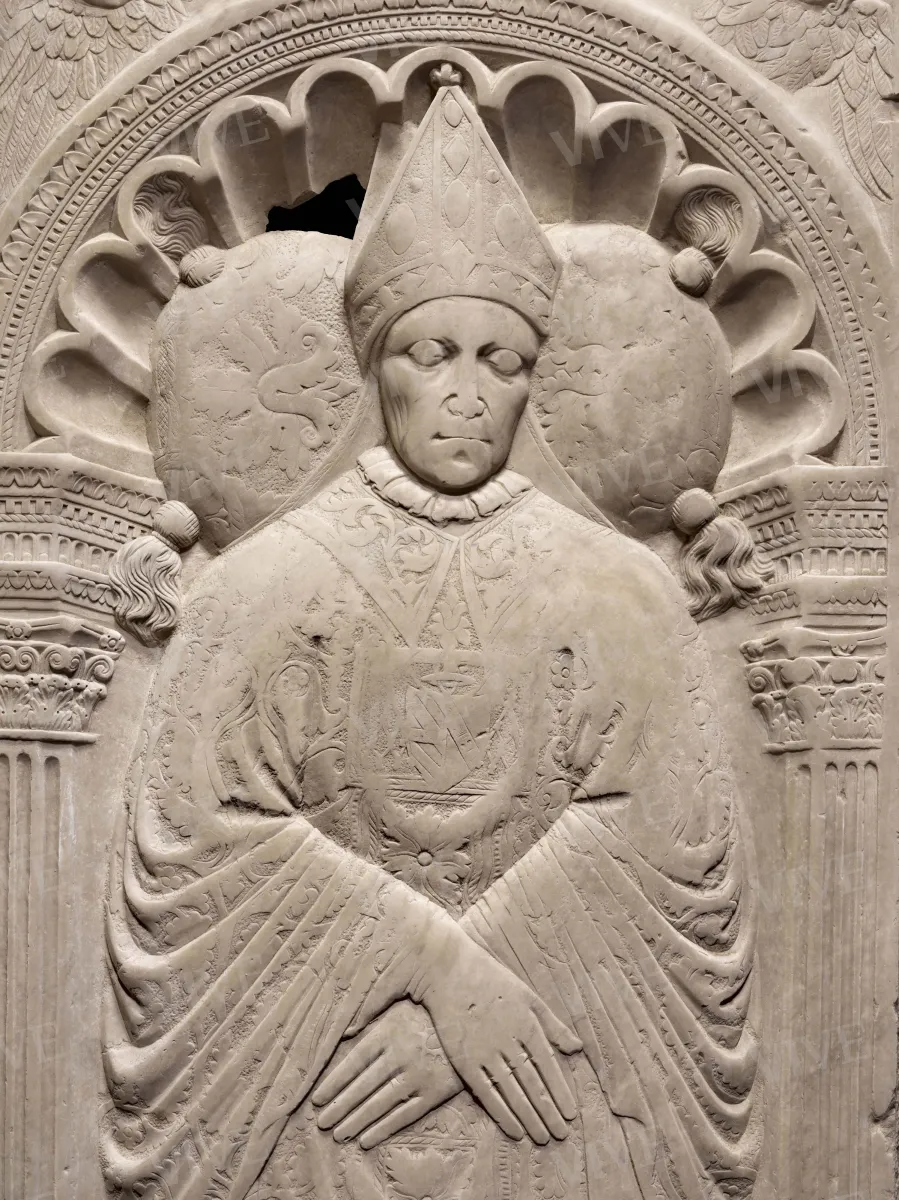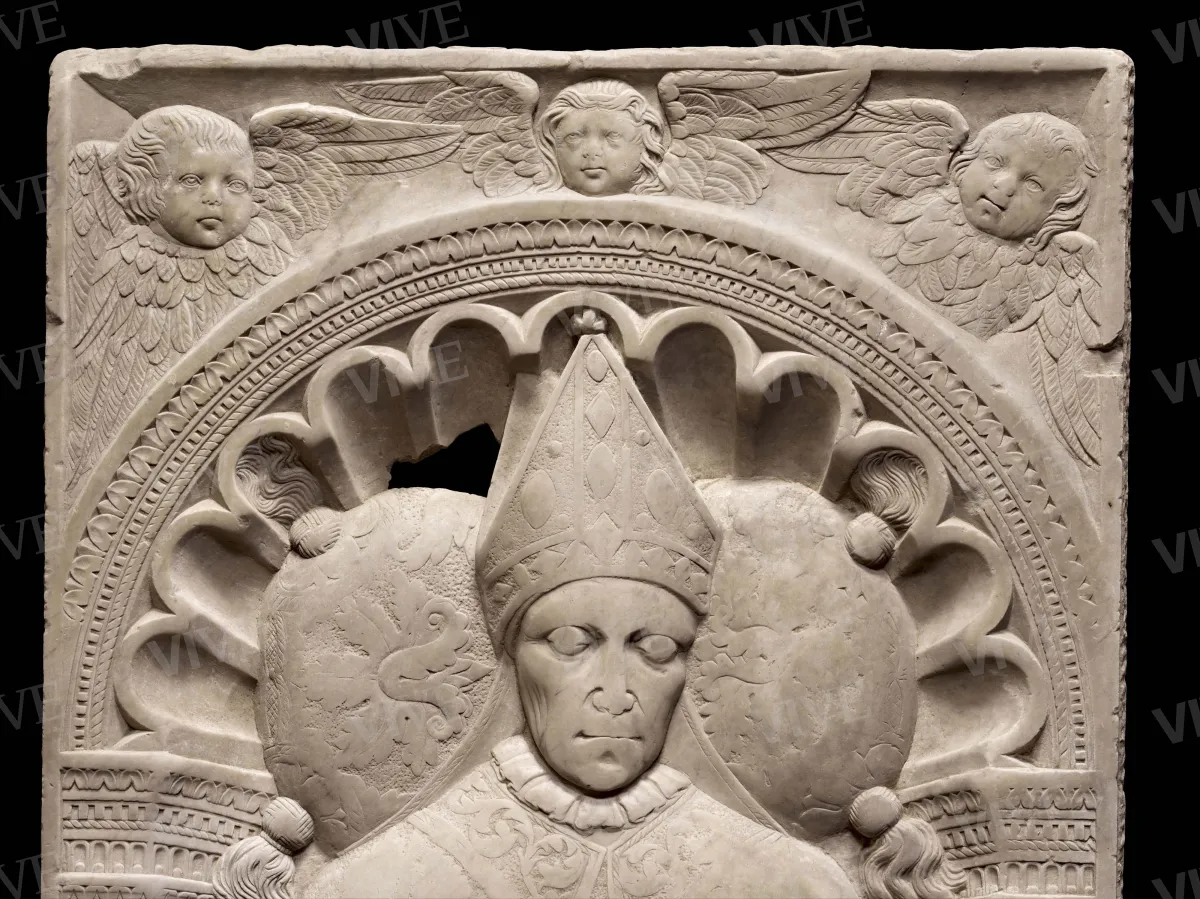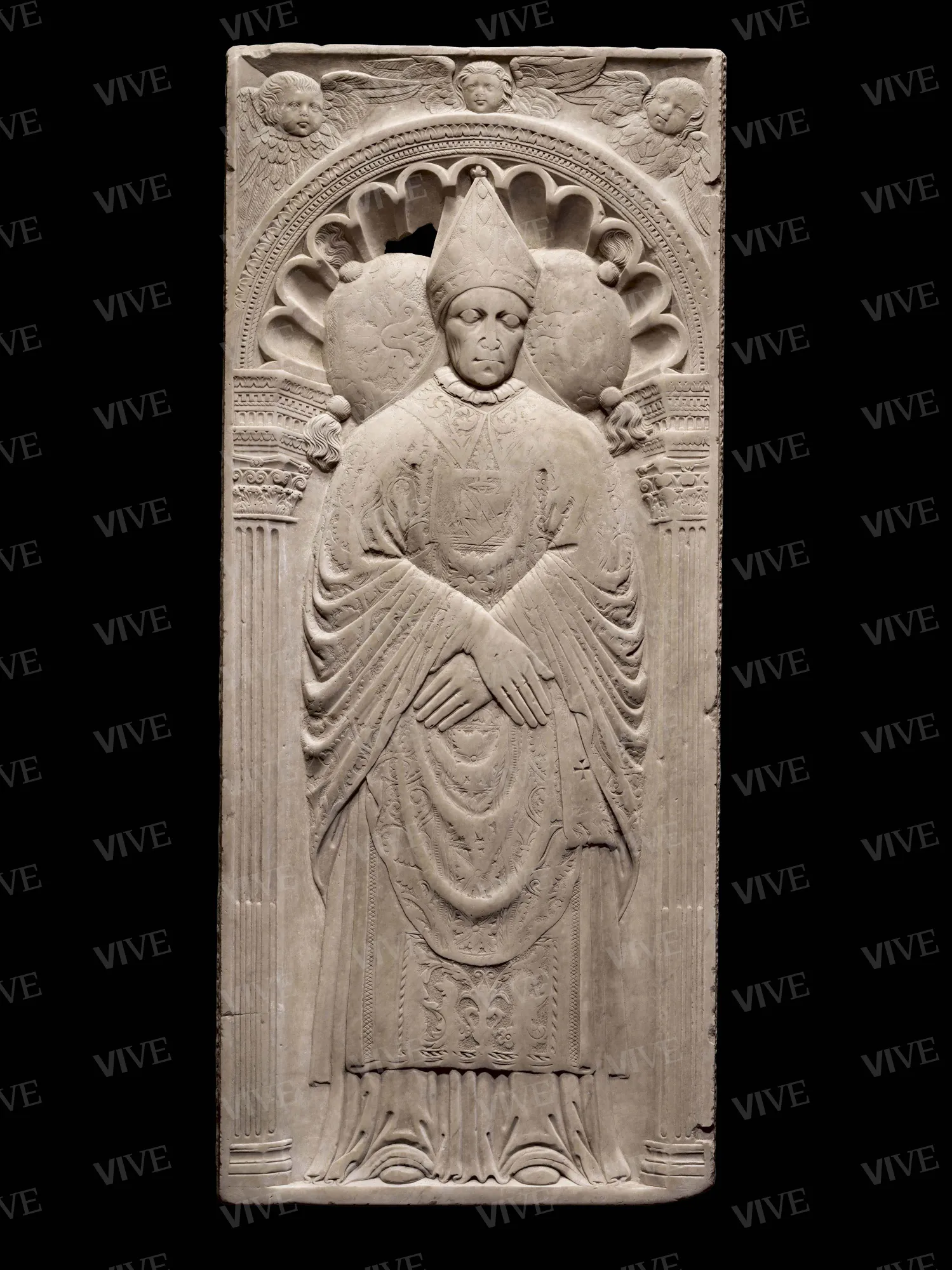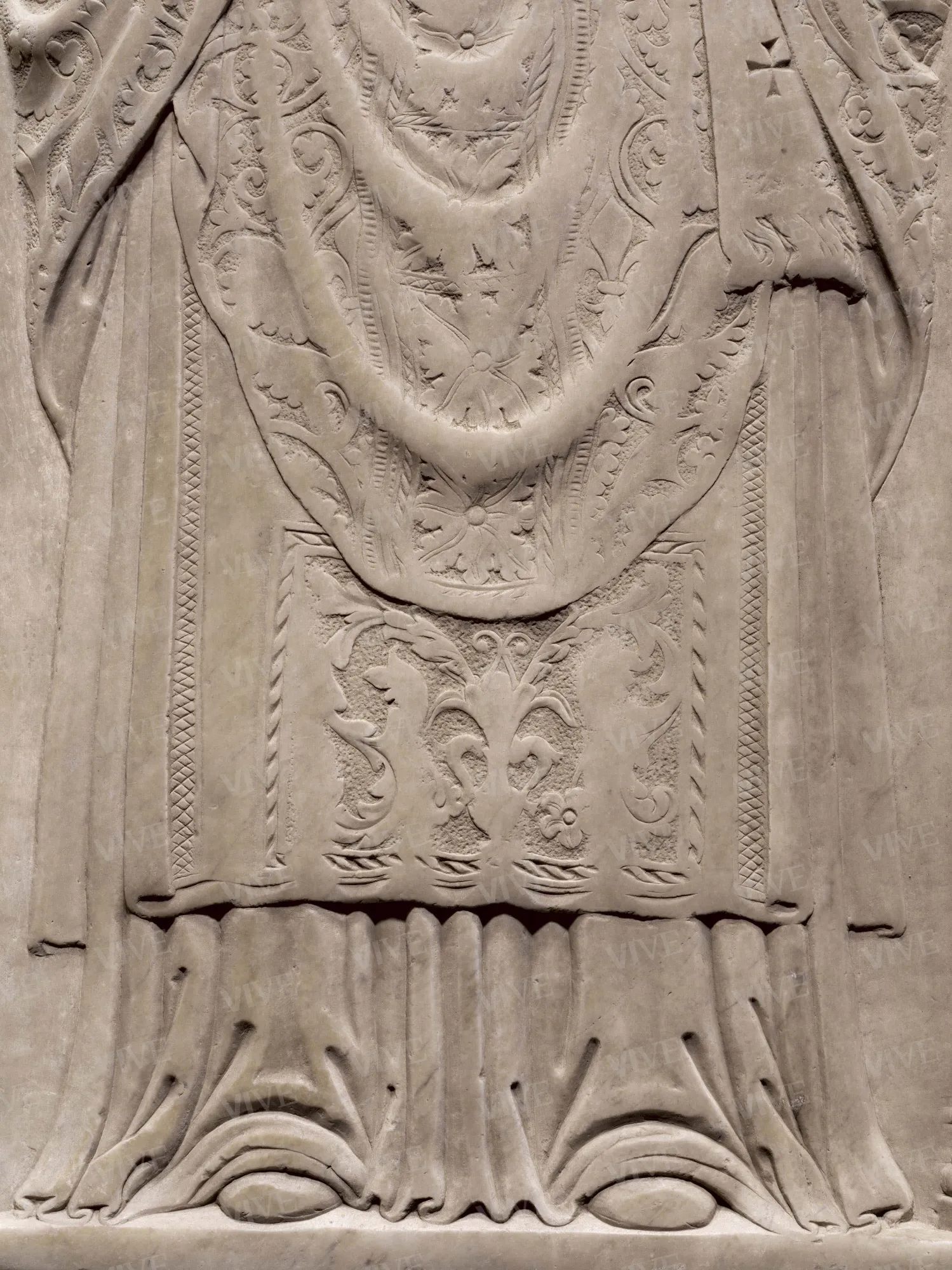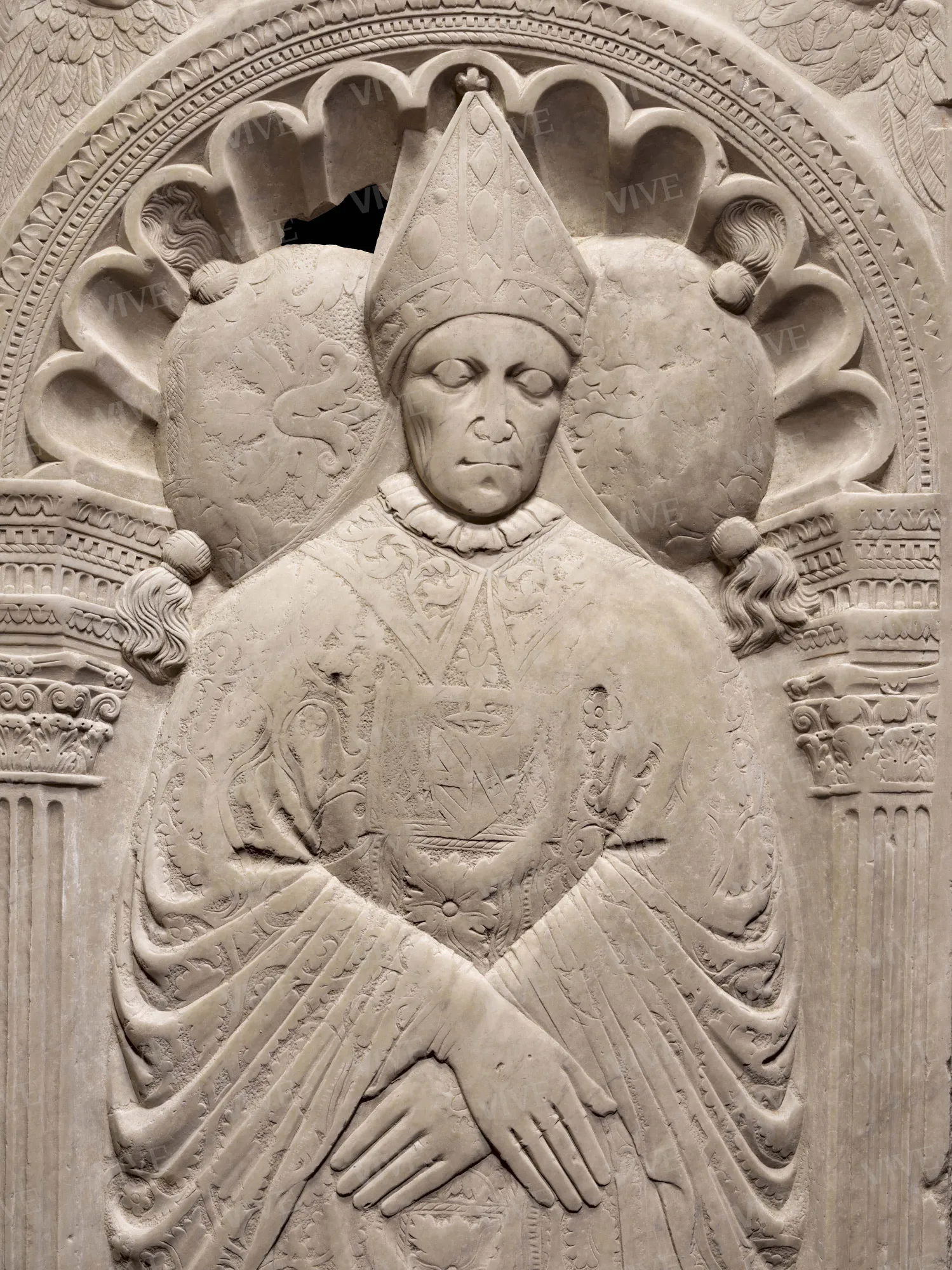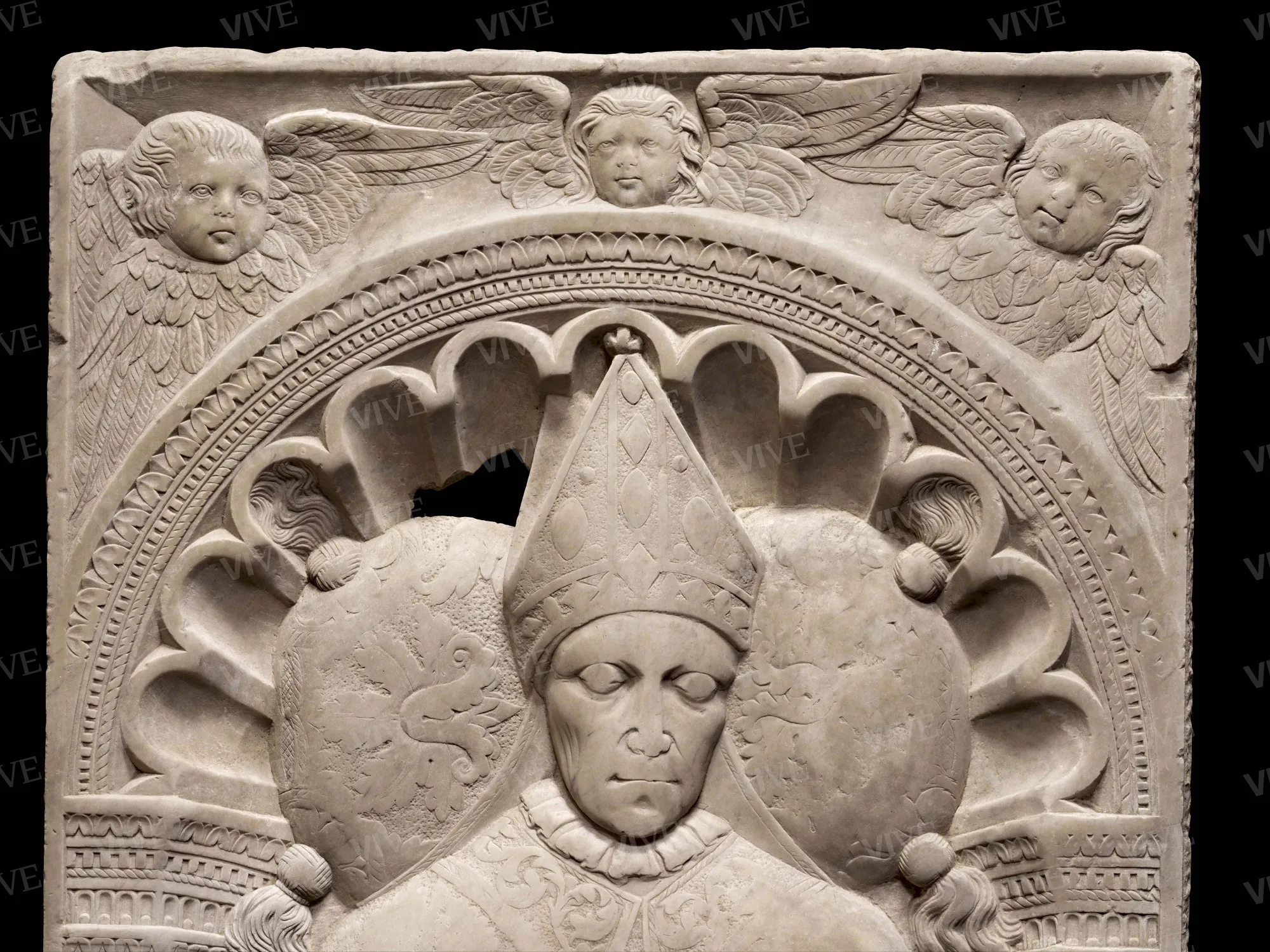Tombstone of Cardinal Giovanni Berardi (Giovanni da Tagliacozzo)
Workshop of Isaia Ganti called da Pisa C. 1449
The tombstone commemorates Cardinal Giovanni Berardi, who served as the protector of the Order of Friars Minor and was a prominent representative of the anti-conciliar faction at the Council of Basel. He passed away in Rome on January 21, 1449. This work appears to be a reworking of Donatello’s Crivelli tomb, possibly originating from the workshop of Isaia da Pisa. Isaia da Pisa played a significant role in disseminating Donatello’s innovations within Roman funerary sculpture during the latter half of the fifteenth century.
The tombstone commemorates Cardinal Giovanni Berardi, who served as the protector of the Order of Friars Minor and was a prominent representative of the anti-conciliar faction at the Council of Basel. He passed away in Rome on January 21, 1449. This work appears to be a reworking of Donatello’s Crivelli tomb, possibly originating from the workshop of Isaia da Pisa. Isaia da Pisa played a significant role in disseminating Donatello’s innovations within Roman funerary sculpture during the latter half of the fifteenth century.
Details of work
Catalog entry
The slab portrays the funeral effigy of Cardinal Giovanni Berardi, also known as Giovanni da Tagliacozzo, who supported the Order of Friars Minor and represented the papal faction at the Council of Basel. He died in Rome on January 21, 1449 (Walter 1996). The prelate’s body is positioned in a niche designed in the ancient style, framed by tapered pillars topped with Corinthian capitals and capped by a scalloped valva. The head rests on a pillow, slightly tilted forward, while the figure maintains a stiff funeral posture, with hands joined on the pelvis and feet on the ground. Three cherubs are visible at the top.
The work, currently housed in Palazzo Venezia’s lapidarium, was originally situated on the floor of the chapel of San Nicola Tolentino at Sant’Agostino in Rome. It was separated from the epigraphic plaque, which is now lost but was previously mounted on the walls, as observed by Francesco Gualdi in the seventeenth century (BAV, Cod. Vat. Lat. 8253, part I, ff. 12v-13r). The epitaph is mentioned in Forcella’s 1869–1884 work, volume V, 1874, number 9, page 8: “FOELICES ANIMAS INTER MICAT IPSE IOHANNES / QVI TAGLIACOTIAE GLORIA GENTIS ERAT / QUI TARENTINUS PASTOR: QUI CARDEUS HEROS / PRAENESTINUS: ITEM FLENTIBUS ASTRA DABAT / OBIIT M CCCC XLVIIII XXI IANUARII” (Iohannes [Giovanni] shines among the blessed souls—he who was the glory of the inhabitants of Tagliacozzo, bishop of Taranto, cardinal of Palestrina, assured heaven to the suffering, died on January 21, 1449).
During the restoration work led by Vanvitelli (1760–1764), which included the chapel floor, the slab was relocated to the right-hand wall (Cardella 1793, II, pp. 70–71). It stayed there until the mid-nineteenth century when it was removed to accommodate frescoes by Pietro Gagliardi. This removal also included the slab of Cardinal Bonaventura Badoer (died in 1357; now part of the National Museum of Palazzo Venezia, inv. 13578), and both slabs followed similar paths in their history of collecting. In 1874, the two marble pieces were added to the Museo Artistico-Industriale collection, where they remained until 1957 before being transferred to the Palazzo Venezia collection.
According to studies, the iconographic scheme of the slab derives from Donatello’s tomb of Giovanni Crivelli (d. 1432) in Santa Maria in Aracoeli. This work, noted for its illusionism and use of classical architectural tropes, significantly innovated the typology of medieval earthen sepulchers and quickly established itself as a model (Caglioti 2022). Donatello’s reinterpretation is a prominent feature in the works of Isaia da Pisa, whose workshop has long been credited with the slab by critics. His style is evident in the depiction of the slender tubular folds of the robe and chasuble, which descend straight down the legs and then develop a distinctive circular pattern, reminiscent of the ripples created by a stone thrown into water, at the elbows and pelvis. A notable feature of the sculptor's style is the intricate damask decoration on the chasuble and architectural elements. Despite the wear to the marble surface caused by the passage of time and frequent visitors, these details remain visible.
Clara Seghesio
Entry published on 27 March 2025
State of conservation
Fair.
Restorations and analyses
2002-2003
Provenance
Rome, church of San Nicola da Tolentino, chapel of San Nicola da Tolentino, c. 1449;
Rome, Museo Artistico-Industriale, 1874;
Rome, Museo Nazionale di Palazzo Venezia, 1957.
Exhibition history
Rome, Museo del Corso, Il ‘400 a Roma. La rinascita delle arti da Donatello a Perugino, April 29–September 7, 2008.
Sources and documents
Biblioteca Apostolica Vaticana (BAV), Cod. Vat. Lat. 8253, part I, ff. 12v-13r.
References
Cardella Lorenzo, Memorie storiche de’ cardinali della Santa Romana Chiesa, tomo III, Roma 1793, pp. 70-71;
Forcella Vincenzo, Iscrizioni delle chiese e d’altri edifici di Roma dal secolo XI fino ai giorni nostri, Roma 1869-1884, V, 1874, p. 8, n. 9;
Martinelli Valentino, Donatello e Michelozzo a Roma (II), in «Commentari», IX, I, 1958, p. 20;
Walter Igebor, Berardi, Giovanni, ad vocem, in Dizionario Biografico degli Italiani, VIII, Roma 1966, pp. 758-761;
La Bella Carlo, Lastre tombali quattrocentesche. Appunti sulla fortuna romana della tomba Crivelli di Donatello, in «Studi romani», LIII, 2005, pp. 506-508;
Barberini Maria Grazia, Palazzo Venezia, il palazzetto e il suo lapidarium. Un viaggio tra i frammenti della storia di Roma, Roma 2006, fig. 30;
La Bella, in Bussagli Marco, Bernardini Maria Grazia (a cura di), Il ‘400 a Roma. La rinascita delle arti da Donatello a Perugino, catalogo della mostra (Roma, Museo del Corso, 29 aprile-7 settembre 2008), Milano 2008, vol. II, pp. 217-218, cat. 133;
La Bella, in Barberini Maria Giulia (a cura di), Tracce di pietra. La collezione dei marmi di Palazzo Venezia, Roma 2008, pp. 240-241, cat. 2;
Barberini, in Barberini Maria Giulia, Sconci Maria Selene (a cura di), Guida al Museo Nazionale del Palazzo di Venezia, Roma 2009, p. 115, cat. 133;
Caglioti Francesco, Vita di Donatello, in Caglioti Francesco (a cura di), Donatello. Il Rinascimento, catalogo della mostra (Firenze, Palazzo Strozzi e Museo Nazionale del Bargello, 19 marzo-31 luglio 2022), Venezia 2022, pp. 51-52.

